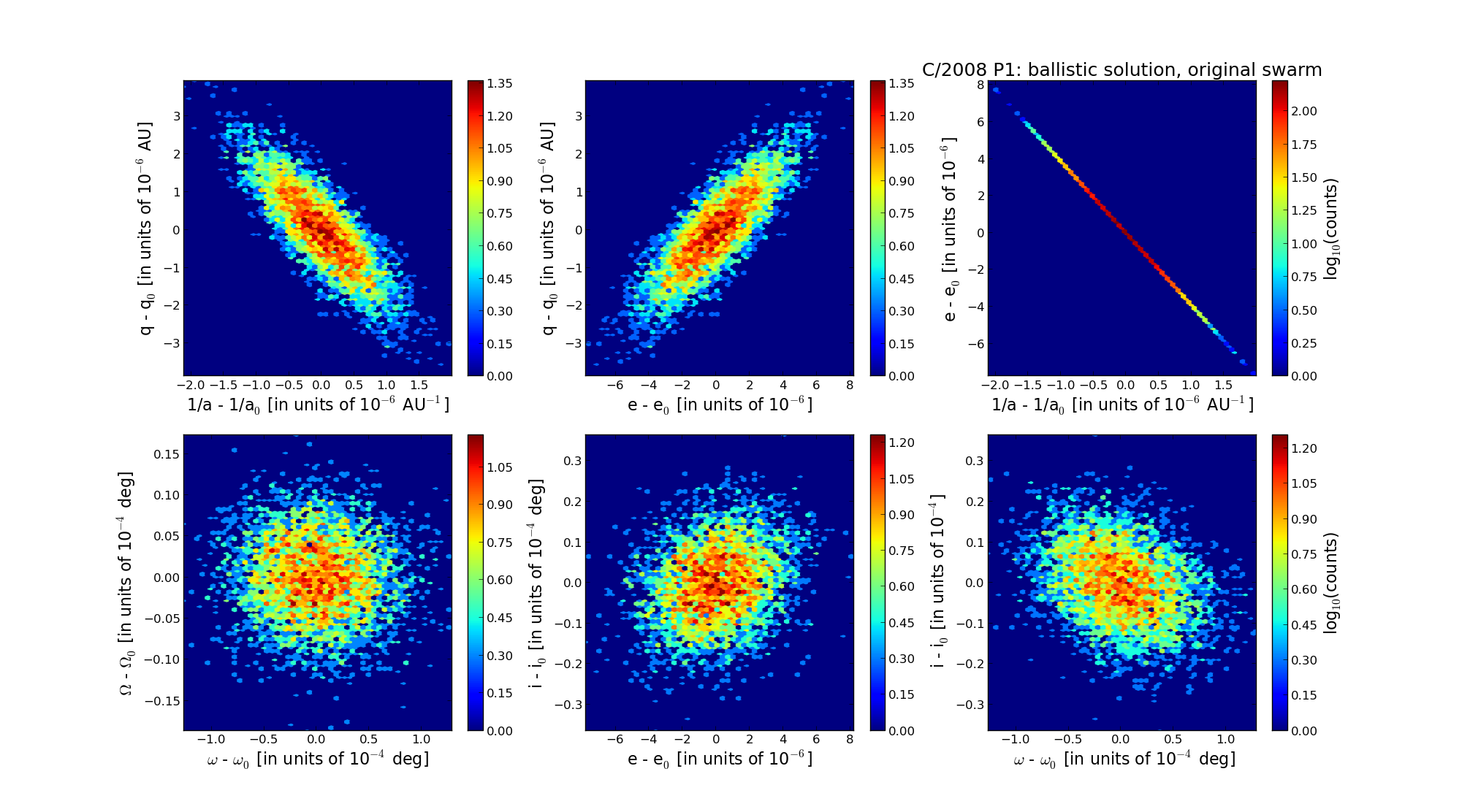| Solar System Dynamics & Planetology Group |
 |
C/2008 P1 Garradd |  |
| Solar System Dynamics & Planetology Group |
 |
C/2008 P1 Garradd |  |
| number of observations | 1373 |
| number of residuals | 2691 |
| data interval | 2008 Aug. 13 — 2011 Feb. 4 |
| rms [arcsec] | 0.46 |
| orbit quality class | 1a+ |
| Epoch (TT) | 20090728.0 | = JD 2455040.5 |
| time of perihelion passage (TT) | 20090722.935905 | ± 0.000243 |
| perihelion distance | 3.89610720 | ± 0.00000108 |
| eccentricity | 1.00176244 | ± 0.00000214 |
| argument of perihelion [deg] | 11.862585 | ± 0.000040 |
| longitude of the ascending node [deg] | 357.676590 | ± 0.000005 |
| inclination [deg] | 64.308943 | ± 0.000009 |
| inverse semimajor axis [10-6 au-1] | -452.36 | ± 0.55 |

| Epoch (TT) | 17040727 | |
| time of perihelion passage (TT) | 20090722.891761 | ± 0.000239 |
| perihelion distance | 3.89043249 | ± 0.00000111 |
| eccentricity | 0.99941649 | ± 0.00000214 |
| argument of perihelion [deg] | 11.963829 | ± 0.000039 |
| longitude of the ascending node [deg] | 357.736840 | ± 0.000005 |
| inclination [deg] | 64.317061 | ± 0.000009 |
| inverse semimajor axis [10-6 au-1] | 149.98 | ± 0.55 |
| Epoch (TT) | 23150725 | |
| time of perihelion passage (TT) | 20090722.386462 | ± 0.000239 |
| perihelion distance | 3.89265287 | ± 0.00000102 |
| eccentricity | 0.99906391 | ± 0.00000214 |
| argument of perihelion [deg] | 11.780623 | ± 0.000039 |
| longitude of the ascending node [deg] | 357.715831 | ± 0.000005 |
| inclination [deg] | 64.320996 | ± 0.000009 |
| inverse semimajor axis [10-6 au-1] | 240.48 | ± 0.55 |